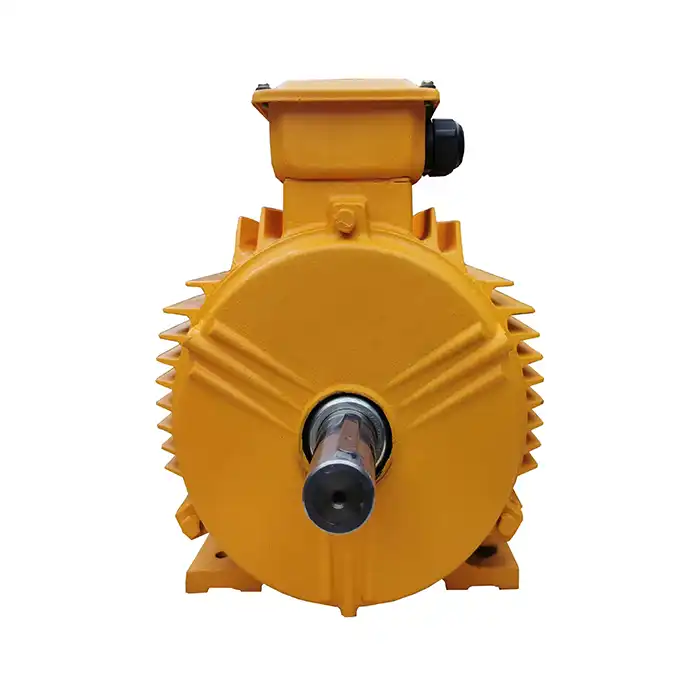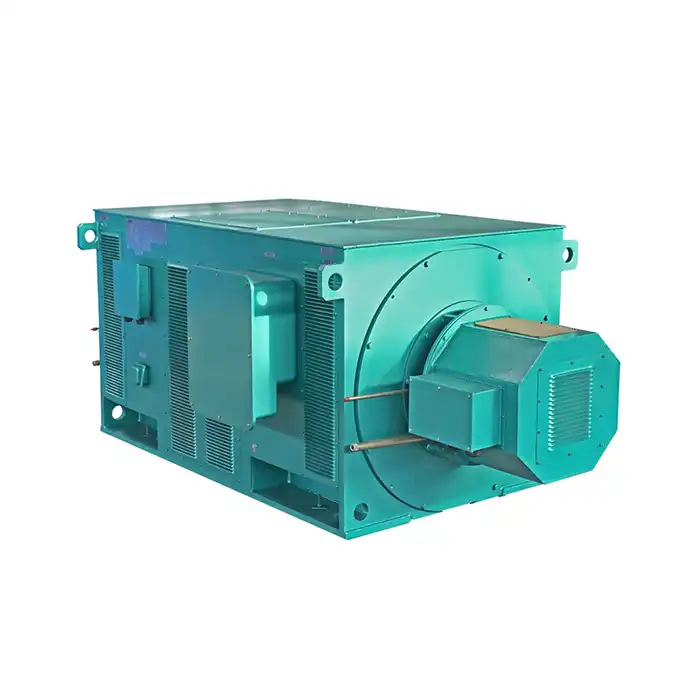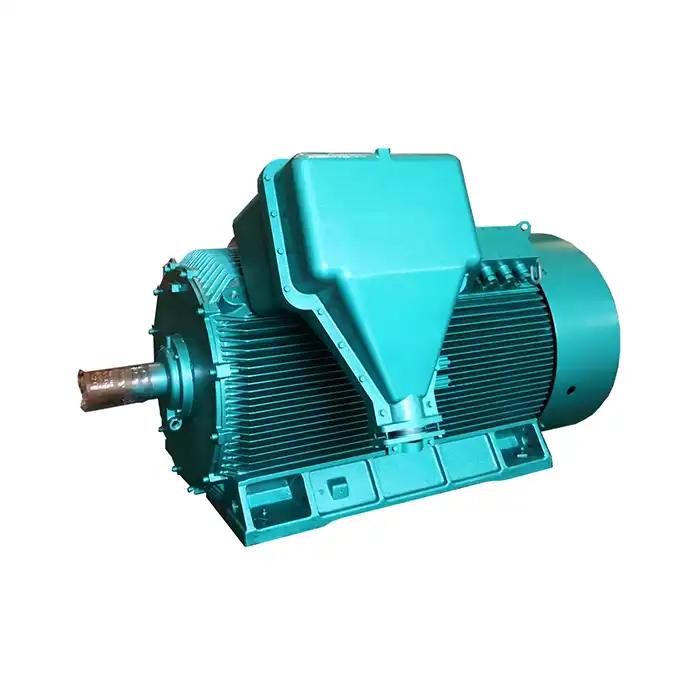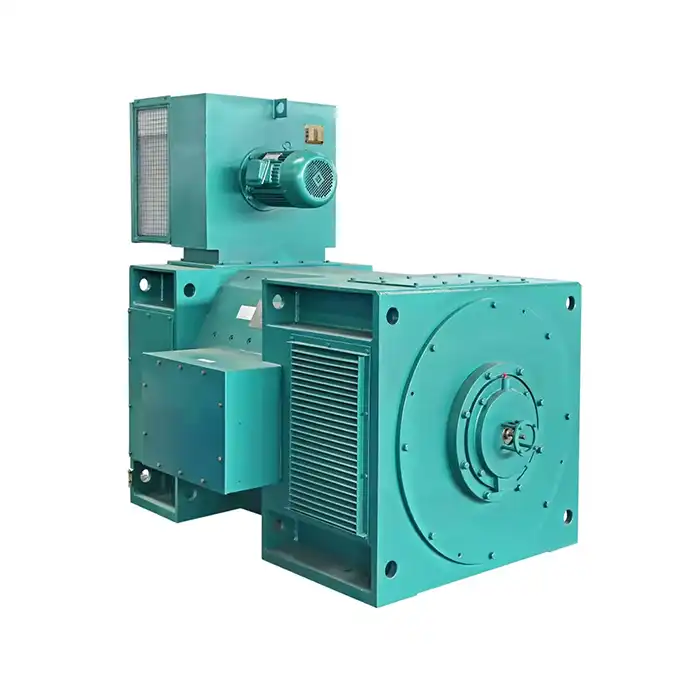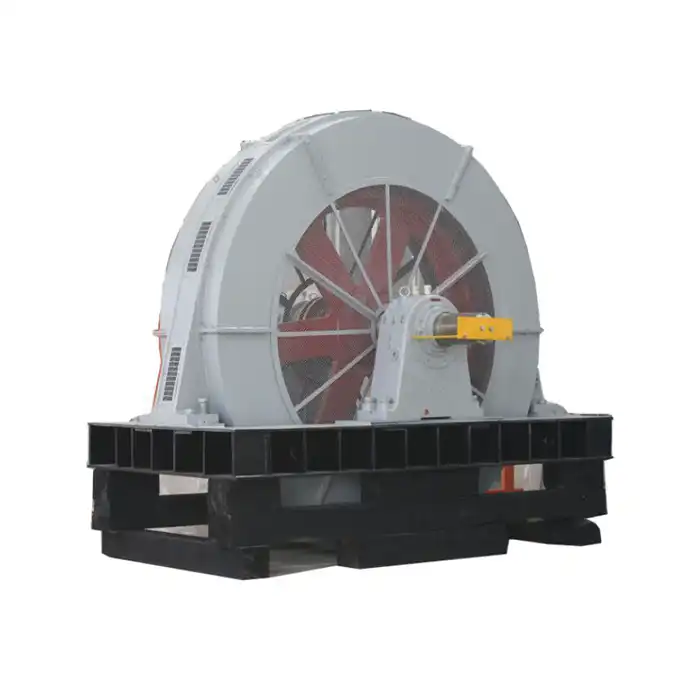When selecting motors for industrial applications, understanding the fundamental differences between slip ring and squirrel cage motors becomes crucial. A 6kv slip ring motor offers superior starting torque and variable speed control through external resistance control, making it ideal for heavy-duty applications. Meanwhile, squirrel cage motors provide robust construction with minimal maintenance requirements, featuring a simpler rotor design without brushes or slip rings. The primary distinction lies in rotor construction: slip ring motors utilize wound rotors with external connections, while squirrel cage motors employ aluminum or copper bars short-circuited by end rings, creating a cage-like structure.

Series:YR-HV
Protection level:IP23
Voltage range:3000V±5%,3300V±5%,6000V±5%,6600V±5%,10000V±5%,11000V±5%
Power range:200-5600 kW
Application:hoist, rolling mill, wire drawing machine.
Advantage:low noise, small vibration, reliable performance, easy installation and maintenance.
Standard: This series of products complies with JB/T10314.1-2002 and JB/T7594 standards.
Others: SKF, NSK, FAG bearings can be replaced according to customer requirements.
Understanding Motor Construction and Design Principles
The fundamental architecture of these motor types shapes their operational characteristics. Slip ring motors feature wound rotors with copper windings connected to external slip rings, allowing variable resistance insertion during startup. This design enables precise control over starting current and torque characteristics.
Squirrel cage motors employ a simpler rotor construction. Aluminum or copper bars run parallel to the motor shaft, connected by end rings. This creates the distinctive "cage" appearance that gives the motor its name. The absence of windings or external connections results in a more robust design.
Construction materials significantly impact performance. High voltage motors, particularly those operating at 6kv levels, require specialized insulation systems. Slip ring designs incorporate brush assemblies and collector rings, adding complexity but enabling external control circuits.
If you need precise speed control with high starting torque, then slip ring motors prove more suitable. If you require minimal maintenance with reliable operation, then squirrel cage motors offer better value.
Starting Characteristics and Torque Performance Analysis
Starting performance represents a critical differentiator between these motor types. Slip ring motors achieve starting torques ranging from 200% to 300% of rated torque while limiting starting current to 150% of full load current. This exceptional performance stems from external resistance control during startup.
Test data from industrial applications shows slip ring motors reaching 85% of synchronous speed within 3-5 seconds under full load conditions. The gradual resistance reduction allows smooth acceleration without mechanical stress on driven equipment.
Squirrel cage motors typically produce starting torques between 150% to 250% of rated torque, accompanied by starting currents of 600% to 800% of full load current. Direct-online starting creates significant electrical demand on supply systems.
Three core starting differences emerge:
- Current limitation capability favors slip ring designs
- Torque control flexibility advantages slip ring motors
- Simplicity benefits squirrel cage applications
If you need controlled starting with limited electrical infrastructure, then 6kv slip ring motors provide optimal solutions. If you have adequate supply capacity and prefer simplicity, then squirrel cage motors meet requirements effectively.
Speed Control Methods and Variable Drive Applications
Speed control capabilities distinguish these motor technologies significantly.
Slip ring motor
Slip ring motors achieve speed variation through rotor resistance modification, providing smooth control from near-zero to rated speed. This inherent characteristic makes them valuable for applications requiring gradual acceleration or precise speed matching.
External resistance banks connected to slip rings enable stepless speed control. Industrial tests demonstrate speed variations from 20% to 100% of synchronous speed with stable operation. The rotor resistance method, while generating heat, offers cost-effective speed control for specific applications.
Squirrel cage motor
Squirrel cage motors require external variable frequency drives (VFDs) for speed control. Modern VFD technology provides excellent speed regulation, though at higher initial investment costs. The combination delivers superior speed accuracy and power efficiency compared to resistance-based control methods.
Variable speed applications in process control systems often favor different approaches. Slip ring motors with resistance control suit applications where occasional speed changes occur. Continuous variable speed operations benefit from squirrel cage motors with VFD systems.
If you need occasional speed adjustment with lower initial costs, then slip ring motors with resistance control work well. If you require continuous speed variation with maximum efficiency, then squirrel cage motors with VFDs provide better solutions.
Maintenance Requirements and Operational Reliability
Maintenance considerations significantly impact total ownership costs. Slip ring motors require regular brush replacement, typically every 6-12 months depending on operating conditions. Slip ring surfaces need periodic cleaning and machining to maintain proper electrical contact.
Brush wear monitoring becomes essential for preventing commutation problems. Industrial maintenance data indicates slip ring motors require 40-60% more maintenance hours compared to squirrel cage designs. However, this maintenance remains straightforward with proper training.
Squirrel cage motors offer exceptional reliability with minimal maintenance needs. The absence of brushes, slip rings, and external connections eliminates major wear components. Bearing lubrication and general cleanliness represent primary maintenance requirements.
Reliability statistics from manufacturing facilities show squirrel cage motors achieving 98-99% uptime with proper maintenance. Slip ring motors typically achieve 95-97% availability, primarily due to brush-related maintenance intervals.
Environmental factors affect maintenance schedules differently. Dusty or humid conditions accelerate brush wear in slip ring motors. Squirrel cage motors demonstrate better tolerance to harsh environmental conditions.
If you operate in clean environments with skilled maintenance staff, then slip ring motors provide acceptable reliability. If you need maximum uptime with minimal maintenance intervention, then squirrel cage motors deliver superior performance.
Cost Analysis and Economic Considerations
Initial investment varies significantly between motor types. Squirrel cage motors typically cost 20-30% less than equivalent slip ring motors due to simpler construction. The absence of slip rings, brushes, and associated hardware reduces manufacturing complexity.
However, total cost of ownership requires broader analysis. Applications requiring soft starting may need additional equipment with squirrel cage motors. Soft starters or VFDs add 30-50% to initial motor costs, potentially offsetting the price advantage.
Operating costs differ substantially. 6kv slip ring motors with resistance control generate heat losses, reducing overall system efficiency. Energy costs over motor lifetime can exceed initial purchase price in continuous-duty applications.
Maintenance costs favor squirrel cage designs. Annual maintenance expenses for slip ring motors average 15-25% higher due to brush replacement and slip ring servicing. Labor costs compound these differences in high-wage regions.
Downtime costs vary with application criticality. Process industries often prefer squirrel cage reliability despite higher initial costs for control equipment. The reduced maintenance downtime justifies additional investment.
If you prioritize lowest initial investment with acceptable maintenance costs, then slip ring motors offer value. If you focus on lifetime costs with maximum reliability, then squirrel cage motors provide better economics.
Industrial Applications and Sector-Specific Uses
Application requirements determine optimal motor selection. Heavy machinery in steel mills, mining operations, and large pumping stations frequently employ slip ring motors. The high starting torque capability handles difficult starting conditions effectively.
Crusher drives, ball mills, and large compressors benefit from slip ring motor characteristics. These applications require substantial starting torque with controlled acceleration to protect mechanical components. The 6kv slip ring motor level suits high-power industrial installations.
HVAC systems predominantly use squirrel cage motors for fans, pumps, and compressors. The reliable operation and minimal maintenance align with building automation requirements. Variable frequency drives provide necessary speed control for energy efficiency.
Power generation facilities utilize both motor types strategically. Cooling water pumps, coal handling systems, and auxiliary equipment selection depends on specific operational requirements. Renewable energy applications favor squirrel cage reliability.
Process control applications in chemical and petrochemical industries evaluate motors based on safety and reliability criteria. Explosion-proof requirements often favor squirrel cage designs due to reduced sparking potential from brush assemblies.
Transportation systems including railways and marine applications select motors based on duty cycle requirements. Frequent starting and stopping may favor slip ring torque characteristics, while continuous operation benefits from squirrel cage reliability.
Conclusion
The choice between slip ring and squirrel cage motors depends on specific application requirements, operational priorities, and economic considerations. Slip ring motors provide exceptional starting torque and inherent speed control capabilities, making them ideal for heavy-duty applications with difficult starting conditions. Squirrel cage motors offer superior reliability, minimal maintenance, and lower total ownership costs for most industrial applications. Understanding these key differences enables informed decisions that optimize performance, reliability, and cost-effectiveness for your specific industrial needs.
Choose XCMOTOR for Your High Voltage Motor Solutions
Selecting the right motor technology impacts your operation's success for decades. XCMOTOR specializes in providing comprehensive power equipment solutions tailored to your specific industrial requirements. Our expertise spans both slip ring and squirrel cage motor technologies, ensuring optimal selection for your application.
As a trusted 6kv slip ring motor supplier, we maintain extensive inventory of high-quality motors from established manufacturers. Our technical team evaluates your operational requirements, duty cycles, and environmental conditions to recommend the most suitable motor technology.
XCMOTOR's advantages include original parts from trusted brands, ensuring reliability and longevity. Our fast delivery service gets your operations running quickly, while our 30-day return policy provides purchase confidence. Weekend support availability demonstrates our commitment to your operational continuity.
Our engineering team assists with motor selection, installation planning, and maintenance scheduling. Whether you need high starting torque capability of slip ring motors or the reliable operation of squirrel cage designs, we provide solutions that maximize your investment value.
Ready to optimize your motor selection? Contact our specialists who understand industrial automation, HVAC systems, power generation, and process control applications. We'll help you navigate the slip ring versus squirrel cage decision with confidence.
Get expert guidance on your next 6kv slip ring motor project - contact us at xcmotors@163.com and discover why leading industrial companies trust XCMOTOR for their critical power equipment needs.
References
- Chapman, Stephen J. "Electric Machinery Fundamentals, 5th Edition." McGraw-Hill Education, 2012.
- Fitzgerald, A.E., Kingsley, Charles Jr., and Umans, Stephen D. "Electric Machinery, 7th Edition." McGraw-Hill Science/Engineering/Math, 2013.
- IEEE Standard 112-2017, "IEEE Standard Test Procedure for Polyphase Induction Motors and Generators." Institute of Electrical and Electronics Engineers, 2018.
- Nailen, Richard L. "Motor Application and Maintenance Handbook." McGraw-Hill Professional, 2001.
- Sen, P.C. "Principles of Electric Machines and Power Electronics, 3rd Edition." John Wiley & Sons, 2013.
- Toliyat, Hamid A. and Kliman, Gerald B. "Handbook of Electric Motors, 2nd Edition." CRC Press, 2004.



